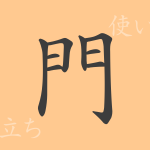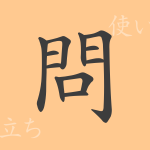The “紋 (mon)” deeply rooted in Japanese culture. The rich history and meaning hidden in this single character are closely linked to the identity of the Japanese people. In this article, we delve into the world of “紋 (mon)” from its origins to its meanings and uses, uncovering its allure.
The Origin of 紋 (Mon)
The character “紋 (mon)” is formed by combining the character for thread “糸 (ito)” with “文 (bun)”, which means pattern. It originated in ancient China to refer to patterns applied to textiles. In Japan, it began with family crests used by nobles during the Heian period and developed into an important cultural element symbolizing families and individuals.
The Meaning and Usage of 紋 (Mon)
“紋 (mon)” is used to refer to marks that symbolize specific groups or individuals, such as family crests or organizational emblems. It is also used to mean patterns or designs, representing decorations applied to various objects like clothing and pottery.
Reading, Stroke Count, and Radical of 紋 (Mon)
The character “紋 (mon)” is a familiar kanji in Japanese.
- Reading: In on’yomi (音読み), it is read as “モン (mon)”, and it does not have a specific kun’yomi (訓読み).
- Stroke Count: It has 11 strokes in total.
- Radical: It belongs to the 糸部 (ito-hen) radical.
Idioms, Proverbs, and Phrases Using 紋 (Mon)
Various idioms, proverbs, and phrases in Japanese include the character “紋 (mon)”. “家紋 (kamon)” refers to a family crest symbolizing a family lineage, “紋所 (monsho)” refers to the emblem of a sumo wrestler’s stable or a kabuki actor’s troupe. Additionally, “紋様 (mon’yō)” describes patterns or designs depicted on fabrics or paper.
Summary of 紋 (Mon)
“紋 (mon)” holds more than just a literal meaning; it serves as a symbol of identity in Japanese culture and plays a significant role as an aesthetic element. Starting from family crests, its spirit continues in modern times in corporate logos and more, making it an entity deeply connected to the Japanese sense of beauty.

























